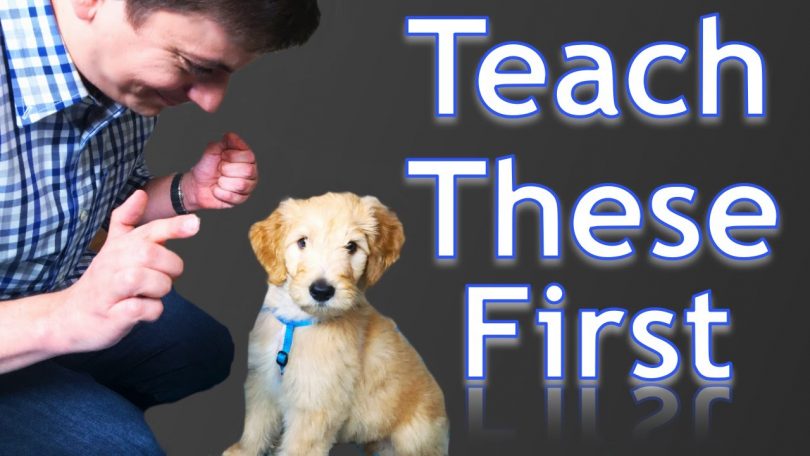1. Come
This is perhaps the most essential command your new puppy should learn. Your dog being able to come when called has many benefits, including safety — but it’s also important if you plan on letting your dog play in a park or other outdoor areas without a leash.
Your puppy should associate the phrase, “(dog’s name), come!” with treats and rewards.
To help reinforce this, first practice sitting with your puppy and repeating the phrase as you feed them treats.
Each time the puppy finishes a treat, say the phrase, then drop a treat. After doing this a few times, move farther away from your puppy, still showing them the treat, and showering them with positive comments and affection when they come to receive the treat.
Eventually, you should do the command without showing the treat, and finally, only present the treat once you are sure that they have come to you.
2. Sit
This is a great skill for your puppy to learn, and necessary in a variety of circumstances. Like the previous command, they will learn to do this in a series of small steps, using a treat as a reward.
First, present their treat, letting them smell or lick it. Slowly, move the treat toward their forehead. Their nose will follow the treat, forcing them into a seated position. After they have sat, give them their treat. Repeat a few times.
Then, incorporate the command, “(dog’s name), sit!” into the process. As your dog starts to associate your hand movement with sitting down, it will eventually learn to sit without the gesture, and the command “sit!” will be enough.
3. Stay
The key to successfully teaching your dog to “stay” is using the command in conjunction with a finishing word, like “okay” or “free,” to indicate that the command is finished. This creates clear boundaries for when the action begins and ends. Unlike the last two commands, the “stay” command is easier to teach without treats, as your dog puppy will otherwise follow you.
It is important not to rush through the phases of this command. First, while your dog is in a seated position, say the “stay” command and your finishing word, like “okay,” immediately afterward. Repeat the phrases, gradually increasing the time intervals between the two words by 2 or 3 seconds.
As with the amount of time, you should also increase the physical distance between you and your puppy — only by one step at a time. If it seems like your puppy is about to move, repeat the “stay” command.
4. Lay Down
This command is harder for your puppy to learn, but by following these steps, your puppy should have it in no time.
First, repeat the process used in the “sit” command, giving your puppy a treat once their bottom has reached the ground. Then, take another treat and slowly lower it to the ground. As your puppy tries to maneuver their body to get the treat, they will inevitably lay down.
Once laying down, give them the treat. As you repeat this process, your puppy will be able to perfect their position until they are completely flat on the floor.

